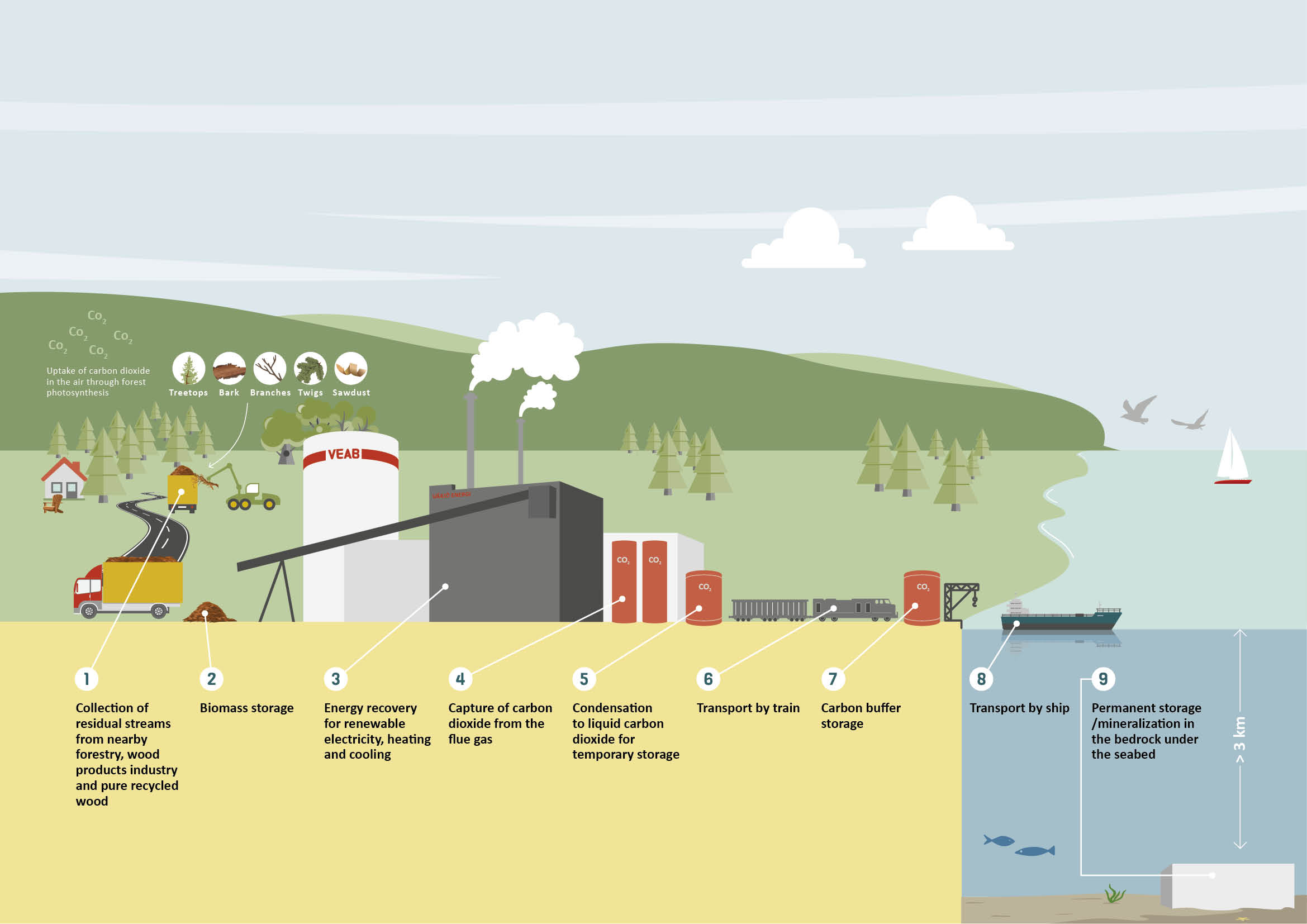How carbon capture works
In the autumn of 2020, Växjö Energi made a strategic decision to invest in carbon capture at Sandviksverket, our combined power and heating plant. On a cold winter's day in Växjö, we would be able to cleanse the air of about 1,000 tonnes of carbon dioxide, thereby lowering the level of atmospheric greenhouse gases. This is a commitment for the future Växjö Energi is willing to strive hard for.
The technology, known as BECCS (Bio Energy Carbon Capture and Storage), enables us to capture the carbon dioxide released when we produce electricity and heat.
How it works
- Residues from forestry, like tops, branches and bark, is delivered to Växjö Energi, where its bioenergy is used for production of renewable electricity and heat.
- Carbon dioxide is separated from the flue gases and compressed into liquid form.
- The liquid carbon dioxide is then transported to a tried-and-tested location for permanent storage and, in the longer term, petrification into various limestone minerals in the North Sea, some 2,000–3,000 metres below sea level.
- This reduces the atmospheric carbon dioxide level and results in carbon dioxide removal (CDR).
To conduct the project, we need to build a carbon capture facility at Sandviksverket. This facility will be a major investment and, a sustainable business model is crucial. The project has created interest at national level, and we have received subsidies for an extended feasibility study from the Swedish Energy Agency. BECCS appears to be a necessary measure to achieve climate neutrality, which is ever so crucial for a sustainable future. In addition, we are already seeing interest from trade and industry to contribute to the realisation of carbon capture and storage. This feels extremely encouraging and we are actively participating in discussions at several levels on how the present proposals for business models can be developed into dynamic and effective markets.


